When shopping for storage furniture for your dining room or living room, you'll likely encounter three similar-looking pieces: buffets, sideboards, and credenzas. It's easy to mix them up—they look alike and serve similar purposes.
However, each has distinct characteristics that set it apart from the others. In this article, we'll break down the key differences between these three furniture types and help you choose the perfect piece for your home and lifestyle.
Sideboard vs Buffet vs Credenza: Overview
Before diving into the differences, let's start with what each piece of furniture actually is.
Sideboard
A sideboard is a low storage cabinet typically placed against a dining room or living room wall. It features a combination of cabinets, drawers, and shelves for storing dining essentials like dishes, linens, and glassware. Many people also use the flat top surface for serving food during meals or displaying decorative items.
Buffet
A buffet is a long piece of furniture designed primarily for serving food. You'll often see these at restaurants or during family gatherings. Buffets stand on visible legs and offer a spacious surface for laying out dishes, drinks, and desserts. The design makes it easy for guests to serve themselves from both sides.
Credenza
A credenza is similar to a sideboard but sits lower to the ground and stretches longer. Most credenzas have either no legs or very short ones, creating a sleek, horizontal profile.
While originally used in dining rooms, modern credenzas work well as office storage, media centers, or entryway consoles. They provide excellent storage with a clean, contemporary look.

Sideboards vs. Buffets vs. Credenzas: Key Differences
While sideboards, buffets, and credenzas look similar and serve comparable purposes, each piece has distinct features that set it apart. Understanding these differences helps you choose the right furniture for your space.
Dimension and Length
Sideboards are typically the most compact option, making them perfect for smaller dining rooms or entryways.
Buffets offer more length, giving you extra surface area for serving dishes during dinner parties.
Credenzas are usually the longest of the three, often stretching 6 feet or more to provide maximum storage.
Height
Sideboards and buffets stand at a similar height—typically 34 to 38 inches—which makes them perfect for serving food or displaying items at a comfortable level.
Credenzas sit lower, usually between 20 and 36 inches, creating a sleek, horizontal profile that works well under windows or mounted TVs.
Table Legs
Both sideboards and buffets feature visible legs or base supports that lift them off the floor, creating an airier feel in your room.
Credenzas either have no legs or very short ones, sitting closer to the ground for a more grounded, modern appearance.
Depth
Sideboards are the shallowest at about 15 inches deep, ideal for narrow hallways or tight spaces.
Buffets measure around 20 inches deep, offering more storage for large serving platters and dinnerware.
Credenzas fall in between at approximately 17 inches, balancing storage capacity with space efficiency.
Structure and Composition
Sideboards typically feature a mix of drawers and cabinet doors with interior shelving. They often have flat tops perfect for lamps or decorative objects.
Buffets include various storage options like drawers, cabinets, and sometimes specialized features such as wine racks or glass-front display areas for showcasing fine china.
Credenzas emphasize concealed storage with sliding doors or hinged cabinets. While designed primarily for hiding clutter, their long, flat tops also work well as display surfaces for art or electronics.

Sideboard vs Buffet vs Credenza: What to Consider?
Now that you understand the differences between these three furniture pieces, let's explore what to consider when choosing the right one for your home.
Space
Start by measuring your available space carefully. Note both the length and depth to ensure your chosen furniture fits comfortably without crowding the room or blocking walkways.
Consider these guidelines:
- Sideboards work best in smaller spaces like apartments or narrow dining rooms
- Buffets need more room but offer extra serving space for entertaining
- Credenzas require the most length, but their low profile keeps spaces feeling open
Remember to account for traffic flow and door clearances when planning your layout.
Storage
Think about what you need to store before making your choice. Each piece offers different storage capacities based on its size.
Sideboards provide compact storage ideal for essentials like table linens and serving pieces. Buffets offer significantly more space with multiple drawers and cabinets for extensive dinnerware collections. Credenzas excel at concealed storage, perfect for hiding electronics, office supplies, or household items.
Match your storage needs to the furniture's capacity to avoid clutter or wasted space.

Applications
These versatile pieces work in multiple rooms throughout your home:
Sideboards shine in bedrooms as dresser alternatives, in entryways for daily essentials, or as stylish mini-bars in living rooms.
Buffets serve double duty as serving stations during gatherings and as TV stands in family rooms. Their ample storage handles entertainment equipment and media collections.
Credenzas transform into filing cabinets for home offices, console tables in entryways, or sleek media centers in modern living rooms.
Consider how you'll actually use the piece daily, not just its traditional purpose.
Style
Your furniture should complement your existing decor while meeting practical needs. Modern spaces benefit from clean-lined pieces like the Colemen Wood Sideboard with its black finish and metal accents. Traditional rooms pair beautifully with pieces like the Annett Sideboard in dark walnut, showcasing classic mid-century design.
Choose a style that enhances your room's aesthetic while providing the functionality you need.

Conclusion
By now, you understand the key differences between sideboards, buffets, and credenzas. While they might look similar at first glance, each serves distinct purposes and offers unique benefits for your home.
The right choice depends on your specific needs. Consider your available space, what you need to store, and how the piece will fit with your existing decor.
Whether you need compact storage, extra serving space, or a sleek media center, one of these options will work perfectly.
FAQs
Can sideboards, buffets, and credenzas be used outdoors?
These furniture pieces are designed for indoor use only because wood and other materials can warp, crack, or fade when exposed to weather conditions. If you need outdoor storage solutions, look for furniture specifically made with weather-resistant materials like teak, aluminum, or synthetic wicker.
How do I maintain and clean a sideboard, buffet, or credenza?
Dust your furniture weekly with a soft, dry cloth and use a slightly damp cloth for deeper cleaning, then dry immediately. Apply furniture polish monthly to protect the finish and avoid harsh chemicals that can damage the wood surface. Clean spills right away and use coasters to prevent stains.
Can I mix and match sideboards, buffets, and credenzas in the same room?
Yes, you can combine these pieces in the same room if you keep the same wood tone or finish for a cohesive look. Match the style and avoid mixing modern with traditional designs, while spacing them apart to prevent overcrowding. Use similar hardware to tie everything together visually.




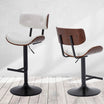
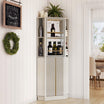

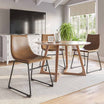

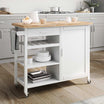
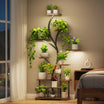


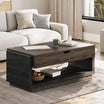






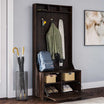


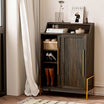
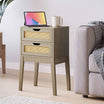




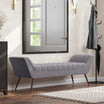
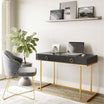

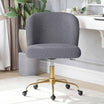


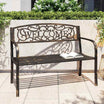


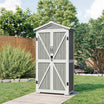
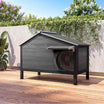



Leave a comment
This site is protected by hCaptcha and the hCaptcha Privacy Policy and Terms of Service apply.